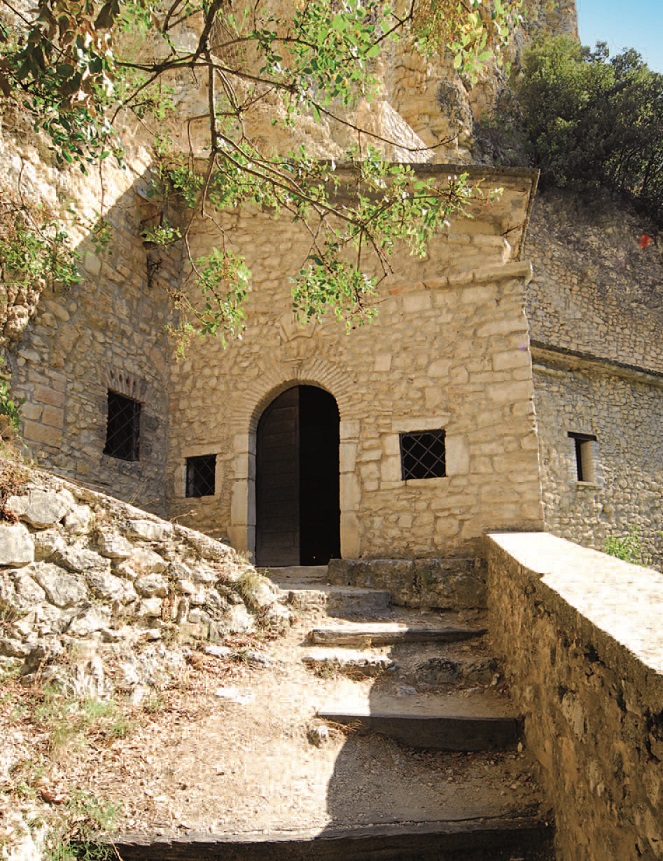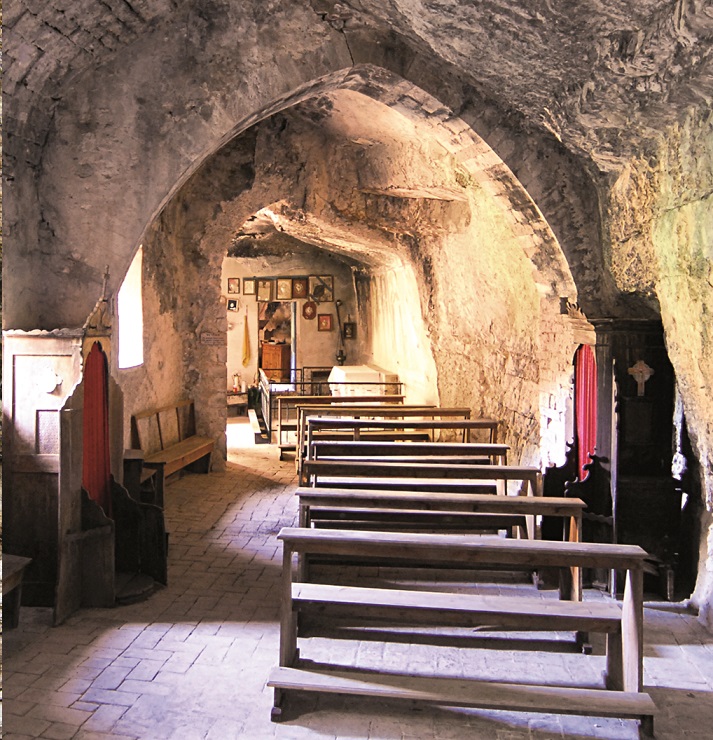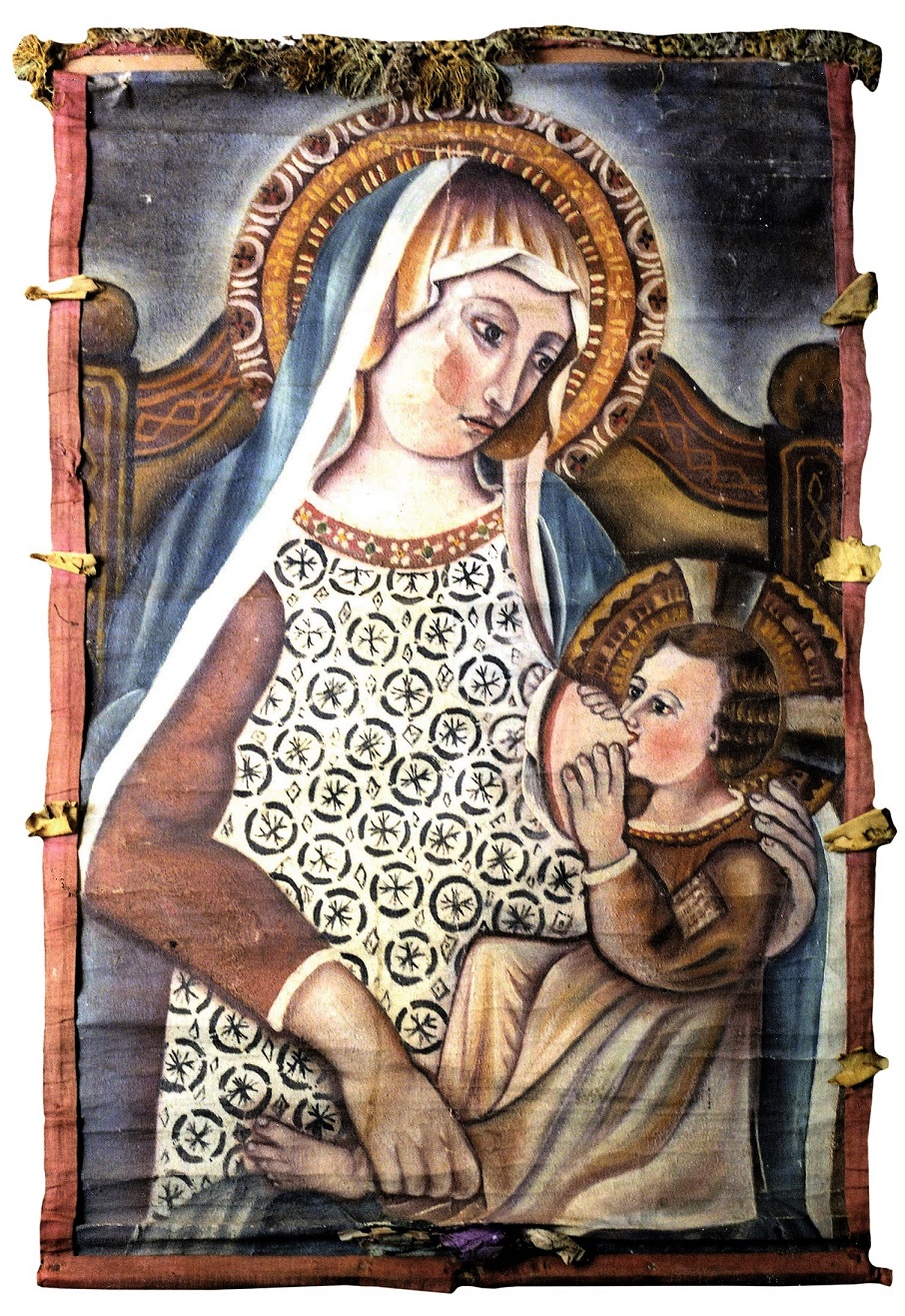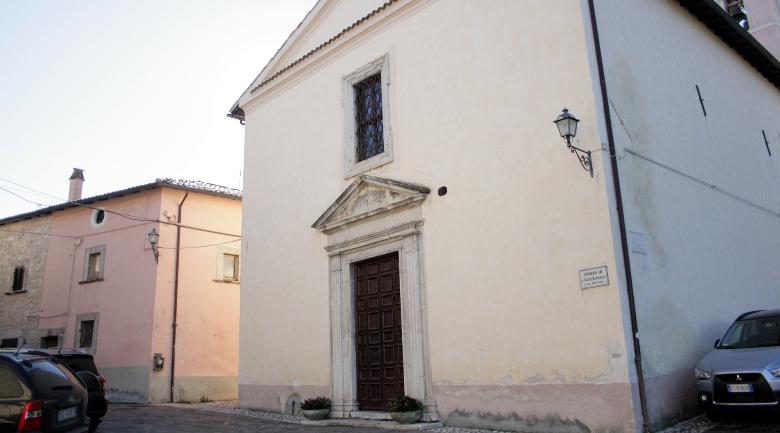In the second half of the 15th century the Augustinians from Cascia complained about the bad conditions of the church, and the same church was restored by the Municipality of Cascia in 1525, then in 1630 it was no longer easy to keep a certain balance with the inhabitants of the neighbouring castles, therefore the hermits started to leave this place. The hermitage underwent several disputes. With the Kingdom of Italy many ecclesiastic privileges were abolished and the community goods of the hamlet of Roccatamburo were administered by the Municipality of Poggiodromo (1809).
In the April 1809 two young men of Roccatamburo discovered the remains of the church and in front of them they saw the picture of the Madonna. The news of the miraculous apparitions spread and Monsignor Ignazio Cadolini confirmed that it was instead the discovery of ancient frescoes. The Augustinians from Cascia started to collect money to renovate the church. The hermitage of St. Croce was called “Our Lady of the Star” because the painting of the Lady’s robe on the wall presented star-shaped crosses. The inhabitants of the neighbouring countries claimed possession of the hermitage, all with different motivations.
In 1970, with a court judgement, the hermitage passed on definitely to the Separate Administration of the Goods of Public Use in Rocchetta. The last hermit was Friar Luigi Crescenzi from Poggiodomo, fallen from the top of the cliff because he felt sick. The processions coming from the neighbouring countries were a lot and always increased, so to create the need to split the flow to the sanctuary starting from the month of May. The first Sunday was and is still reserved to Roccatamburo, the second one to Poggiodomo, the third one to Mucciafora together with the Municipality of Cerreto di Spoleto. The devotees during the pilgrimage used to soak a cloth with the oil of the lamp that was lighted in front of the picture, an oil that was then used to grease the sick. Many heart-shaped former votes still hang on the wall for grace received.
Source: www.comune.poggiodomo.pg.it


































